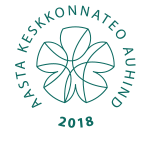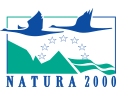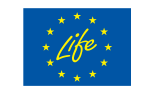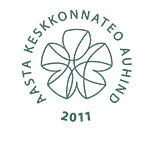|
Lake Prästvike before and after |
Vormsi Landscape Protection Area Surface area (ha): 2433 Project site is located inside the large VäinamerenNatura 2000 area. Terrestrial area forms 46%. NATURA 2000 Code: EE0040002 Vormsi Landscape Protection Area (KLO1000220) was formed in 1987. According to national legislation (Nature Protection Act) the area is protected also according to the adopted protection rules (latest version May 2007). According to the protection rules camping and starting a fire is allowed only in designated areas. For the purpose of not disturbing birds during nesting, visiting the islets is banned from 15 March till 15 July. Vormsi Landscape Protection Area is one part of the large Väinamere Natura 2000 area. The main assets of the direct project area are the heritage culture landscapes, and the habitats of rare species. In general the area is important for conservation of coastal habitats, meadow areas, juniper shrubs, canebrakes, habitats of rare lichen appearing to originate from the tundra, lakes, petrifying springs, limestone hump in Huitberg, pebble piles, alvar forests, different cultural heritage objects. Following habitats are represented in the protection are according to the Habitats Directive Annex: mudflats and sandflats not covered by seawater at low tide (1140), coastal lagoons (1150*), large shallow inlets and bays (1160), reefs (1170), annual vegetation of drift lines (1210), perennial vegetation of stony banks (1220), salicornia and other annuals colonizing mud and sand (1310), Boreal Baltic islets and small islands (1620), Boreal Baltic coastal meadows (1630 *), Semi-natural dry grasslands and scrubland facies on calcareous substrates (Festuco-Brometalia) (* important orchid sites) (6210*), Fennoscandian lowland species-rich dry to mesic grasslands (6270*), Nordic alvar and precambrian calcareous flatrocks (6280*), Molinia meadows on calcareous, peaty or clayey-silt-laden soils (Molinion caeruleae) (6410), Lowland hay meadows (Alopecurus pratensis, Sanguisorba officinalis) (6510), active raised bogs (7110*), Fennoscandian mineral-rich springs and springfens (7160), * Calcareous fens with Cladium mariscus and species of the Caricion Davallianae (7210*), Petrifying springs with tufa formation (7220*), alkaline fens (7230), Calcareous rocky slopes with chasmophytic vegetation (8210), Western Taiga (9010*), Fennoscandian herb-rich forests with Picea abies (9050), Tilio-Acerion forests of slopes, screes and ravines (9080*) and bog woodland (91D0*). According to the Birds Directive Annex I following species with conservation concern are represented in the area: Botaurus stellaris, Podiceps auritus, Cygnus cygnus, Branta leucopsis, Circus aeruginosus, Porzana porzana, Crex crex, Grus grus, Recurvirostra avosetta, Sterna paradisaea, S. albifrons, Bubo bubo, Dryocopus martius, Sylvia nisoria, Lanius collurio, Lullula arborea, Emberiza hortulana. Habitats Directive Annex II species are Cypripedium calceolus, Liparis loeselii, and Angelica palustris. Annex IV species are Lopinga achine and Bufo calamita. Considering Estonian Nature Conservation act and its conservation categories (I-III category) the most valuable vascular plant species present in the project area are: Asplenium ruta-muraria, Asplenium trichomanes, Cephalanthera longifolia, Cephalanthera rubra, Herminium monorchis, Ophrys insectifera, Dactylorhiza fuchsii, Dactylorhiza incarnata, Epipactis atrorubens, Epipactis palustris, Goodyera repens, Gymnadenia conopsea, Listera ovata, Neottia nidus-avis, Orchis militaris, Platanthera bifolia, Platanthera chlorantha and I category bruophyte - Flavocetraria cucullata. The project is focused on the petrifying springs and concrete conservation actions are taking place on an area of 145 ha, mostly around the Lake Prästvike where the springs are located. The Vormsi project area was chosen because of the unique petrifying spring habitats. In the project site the spring habitats are related to the lake Prästvike and one of the biggest petrifying spring is located here. The maximum outflow of the spring is 10 l/s, petrifying process is very intensive. The biggest petrifying spring is taken under nature protection as separate object having high nature conservation value. The natural condition of the spring streams need to be improved together with restoration of hydrological regime in the area. In the project area following valuable habitats are represented: *7210 – calcareous fens with Cladium mariscus and species of the Caricion davallianae; *91D0 – bog woodland; *9080 – Fennoscandian deciduous swamp woods; 7160 – Fennoscandian mineral-rich springs and springfens; *7110 – active raised bogs; 3260 – water courses of plain to montane levels; *6270 – Fennoscandian lowland species-rich dry to mesic grasslands; *1150 – coastal lagoons; *91E0 – alluvial forests with Alnus clutinosa; *6530 – Fennoscandian wooded meadows; *9180 – Tilio – Acerion forests of slopes, screes and ravines. |
WILDLIFE ESTONIA
NGO Wildlife Estonia is established in 2000. Our aim is to protect rivers and other aquatic habitats. We care about the nature, biodiversity and fish in particular.
HABITATS
Springs, rivers and lakes are our common treasure. The more natural status they have the more precious they are.
COMPETENCE
Successful application and implementation of river restoration and fish population status improvement projects. Scientific ichthyology studies with traditional and modern bio-telemetric methods.
Disclaimer on LIFE projects.
LIFE projects are co-financed by the European Union LIFE program. Views and opinions expressed are however those of the author(s) only and do not necessarily reflect those of the European Union. The European Union can not be held responsible for them.
CONTACTS
Eesti Loodushoiu Keskus, registration 80124928,
Address: Veski 4, 51005 Tartu, ESTONIA
Send e-mail:
Contact phone (+372) 51 76886




